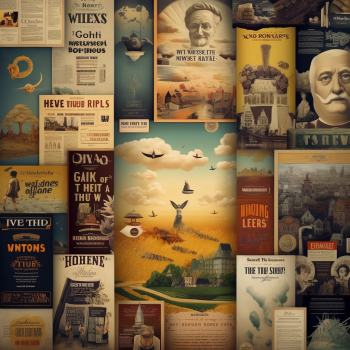Who's_Afraid_of_Designer_Babies《设计婴儿利弊论》

简述
应用科学类纪录片,BBC 频道 2005 年出品,是 BBC Horizon 系列其中之一。
封面

影片信息
官方网站
http://www.bbc.co.uk/sn/tvradio/programmes/horizon/babies_prog_summary.shtml
影片原始规格:
- 中文片名 :设计婴儿利弊论
- 中文系列名:BBC 地平线
- 英文片名 :Who’s Afraid of Designer Babies
- 英文系列名:BBC Horizon
- 电视台 :BBC
- 地区 :英国
- 语言 :英语
- 时长 :约 49 分钟
- 版本 :TV
- 发行时间 :2005
影片内容介绍
剧情简介
Every parent wants their child to have the best in life. But would this extend to picking the best genes for them? To date, genetic technology has only been used to treat serious disease in children. But as ways are developed to manipulate our DNA, there are those who think that parents will inevitably want to choose their children’s genes, and create ‘designer babies’.
A designer baby today
Philippa Handyside’s son Ruiaridh is a genetically selected baby. Some might call him a designer baby. But Philippa wasn’t aiming to create a perfect child and there is nothing unusual about her child’s genes. Genetic technology seemed the only way she could have a baby at all.
Philippa had a problem with her DNA. It didn’t affect her health, but it meant that most of her eggs didn’t carry all the genes needed for a baby to grow healthily. The result was that each time she became pregnant, she miscarried.
Doctors suggested that Philippa try a technique called pre-implantation genetic diagnosis (PGD). Using PGD scientists can screen embryos outside the womb, long before they develop into babies. They can select just those embryos that carry healthy genes. This ensures the baby is free from genetic abnormalities.
Ruiaridh might have grown from a specially selected embryo, but he’s not really a designer baby at all. The embryo was created from one of Philippa’s eggs and her husband’s sperm, just as in IVF. His genes have not been altered, or enhanced in any way. The doctors simply chose an embryo that didn’t carry Philippa’s genetic disorder.
It would actually be very difficult to make a true designer baby using PGD. Today, it can only be used to look at one or two genes at a time. On the other hand, most character traits we might want to choose – anything from height to intelligence – are influenced by a whole range of genes.
What’s more, there is no way of altering the genes inside an embryo using PGD. If you don’t carry the genes to be intelligent, sporty or good-looking, then there’s no way any of your embryos will either. To have a real designer baby, we’d need to be able to choose any genes we wanted and insert them into our children.
Inserting new genes
In 1998 Dr French Anderson put forward a radical proposal. He thought he would soon be able to insert new genes into babies in the womb. The idea was to treat genetic diseases caused by a single damaged gene by inserting a new, healthy gene into a foetus’s cells.
French Anderson had already used this technique – called gene therapy – in children with faulty white blood cells, with some success. But the cells with healthy genes would eventually die, so the patients would have to have the procedure all over again.
French Anderson wanted to try gene therapy in the womb because then he could get the healthy genes into special blood cells called stem cells. These cells grow all the blood cells in the body. If the healthy gene could be injected into the stem cells, then the patient’s body would produce new white blood cells with healthy genes on its own. In short, they would be cured.
But for all Anderson’s plans, this technique has never been used on human babies in the womb. There turned out to be problems with gene therapy. In 1999 an 18-year-old died during a gene therapy trial, and there have been cases of children developing leukaemia after gene therapy treatment. For now, using it on babies in the womb is far too risky.
A human clone: the ultimate designer baby
There is however potentially another way to insert genes into an embryo long before birth – cloning.
No scientific discovery has created as much hysteria as the cloning of Dolly the sheep. She was the first mammal cloned from the DNA of an adult cell. It was a process that brought human cloning one step closer. Shortly after Dolly, Polly was born. She wasn’t just a clone. A human gene had been added early on in the cloning process. She was a true, genetically modified, “designer sheep”. Since Polly, there has been a flurry of claims that humans have been, or soon will be, cloned. But no one has yet produced evidence that a human clone has been created.
Most serious scientists won’t even consider the idea of cloning a human. The procedure is not very effective. Less than 10 per cent of non-human cloning attempts are successful. And many of the pregnancies result in miscarriage or deformities. It is a procedure that is simply too dangerous to use to produce a human baby.
But cloning technology is being used on human eggs. Scientists from Newcastle University and the Newcastle Fertility Centre are using cloning to create stem cells. The research has only just begun, but the ultimate aim is to create cloned stem cells from the DNA of a patient with a degenerative disease. These cells could then be turned into whatever types of cells are needed to treat their damaged organs. It could one day lead to cures for diabetes, Alzheimer’s or heart disease.
There will always be a risk that genetic technology will be hijacked to create designer children. But for now, the technical difficulties make it unlikely anyone will be able to create a true designer baby in the near future.
截图

参考信息
相关的纪录片
暂无
相关领域
人物 Dilly Barlow
| 内容 应用科学类 | 医药 | 人体生理学 | 生物科技 |
|---|
网路消息
- 暂无
Category:片名 Category:BBC Category:BBC Horizon Category:2005 Category:Dilly Barlow Category:4. 应用科学类 Category:4.1 医药 Category:4.13 人体生理学 Category:4.14 生物科技 Category:缺翻译